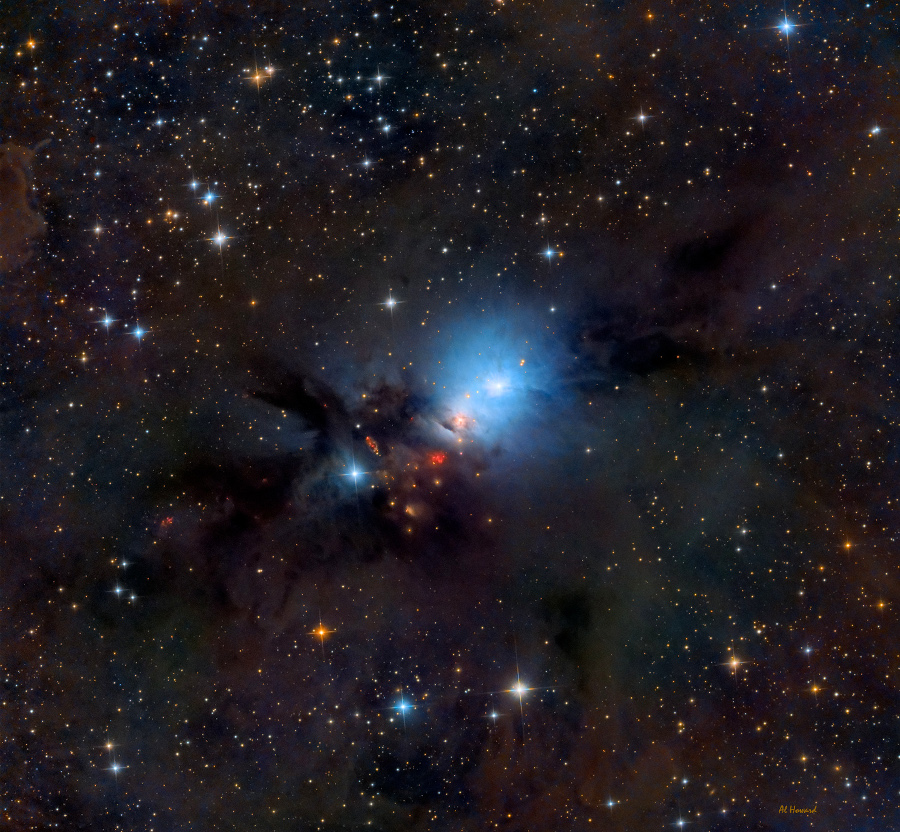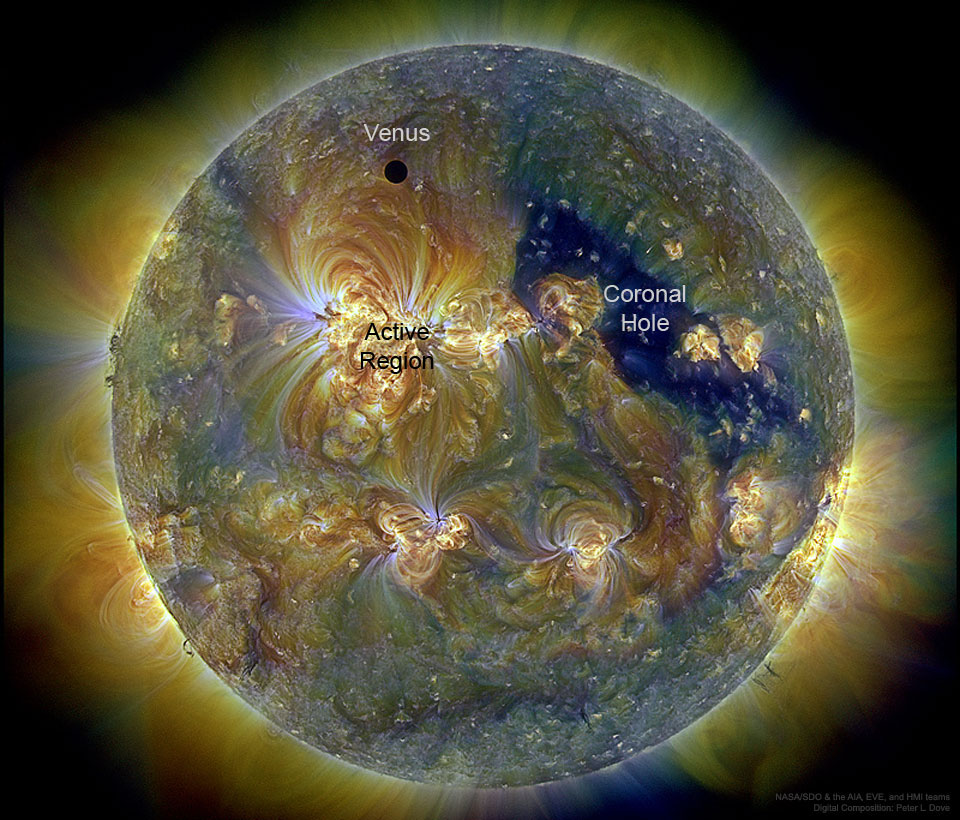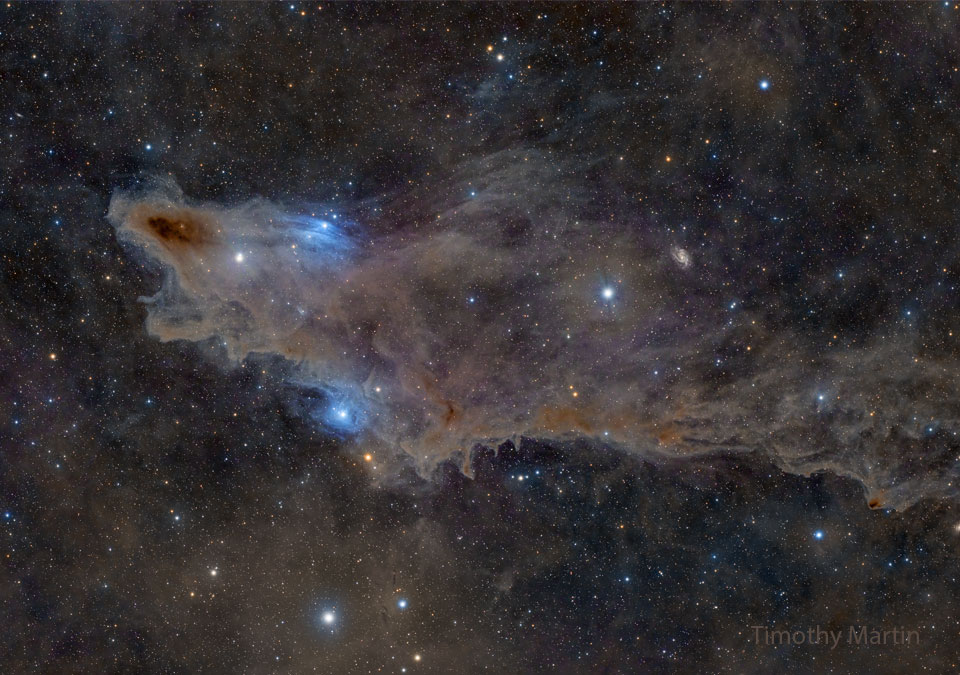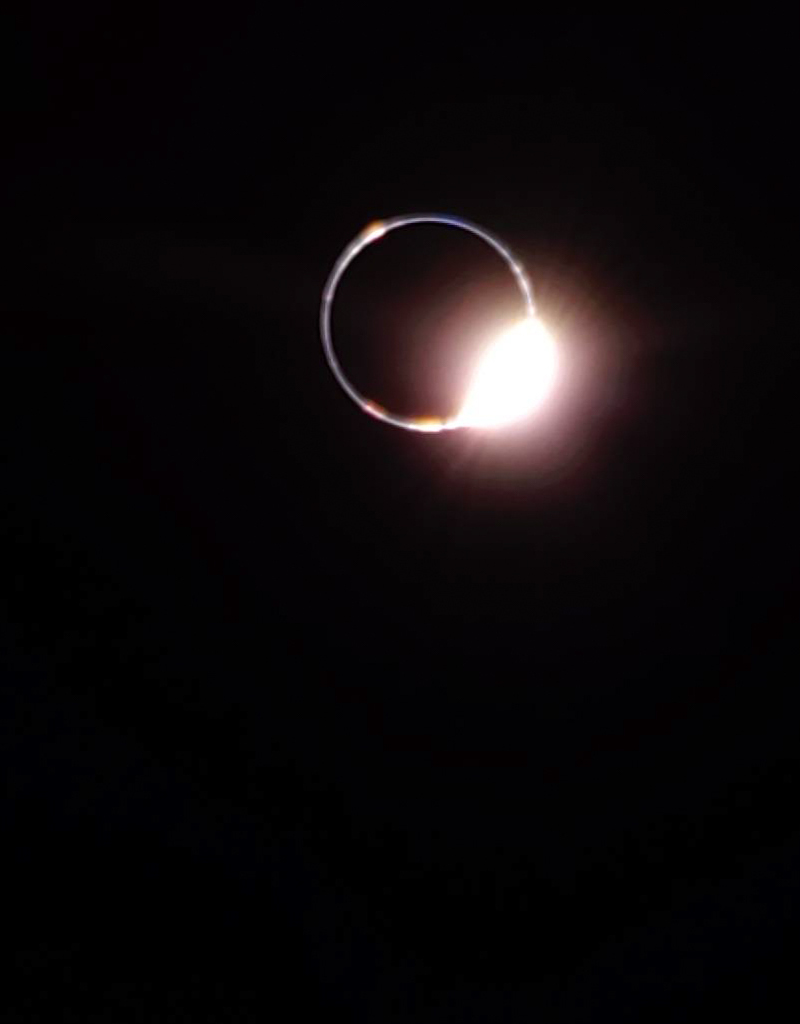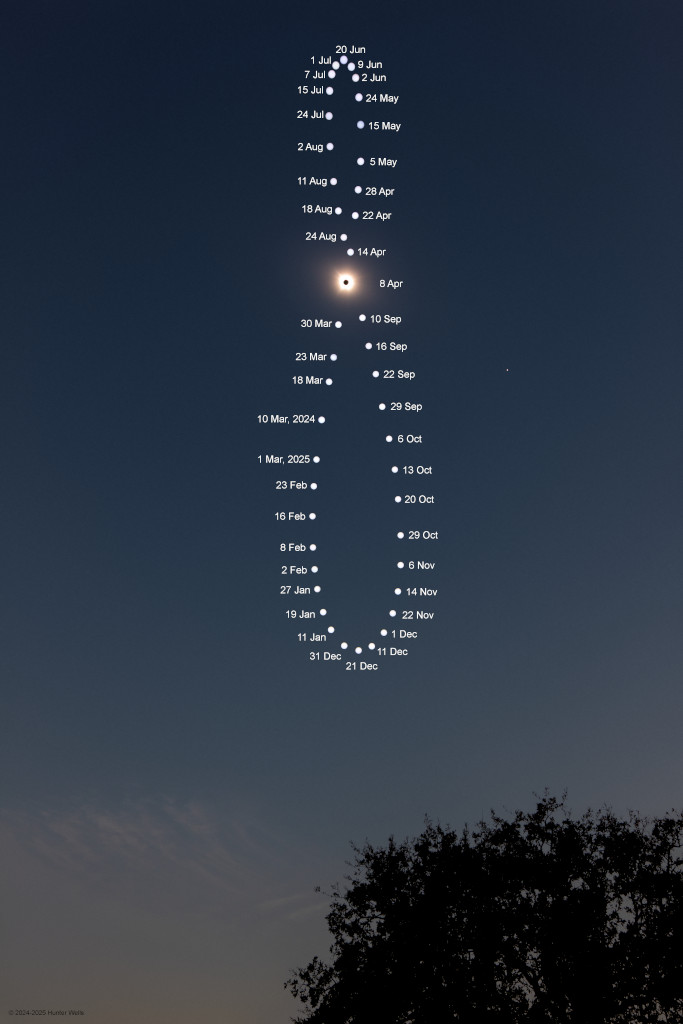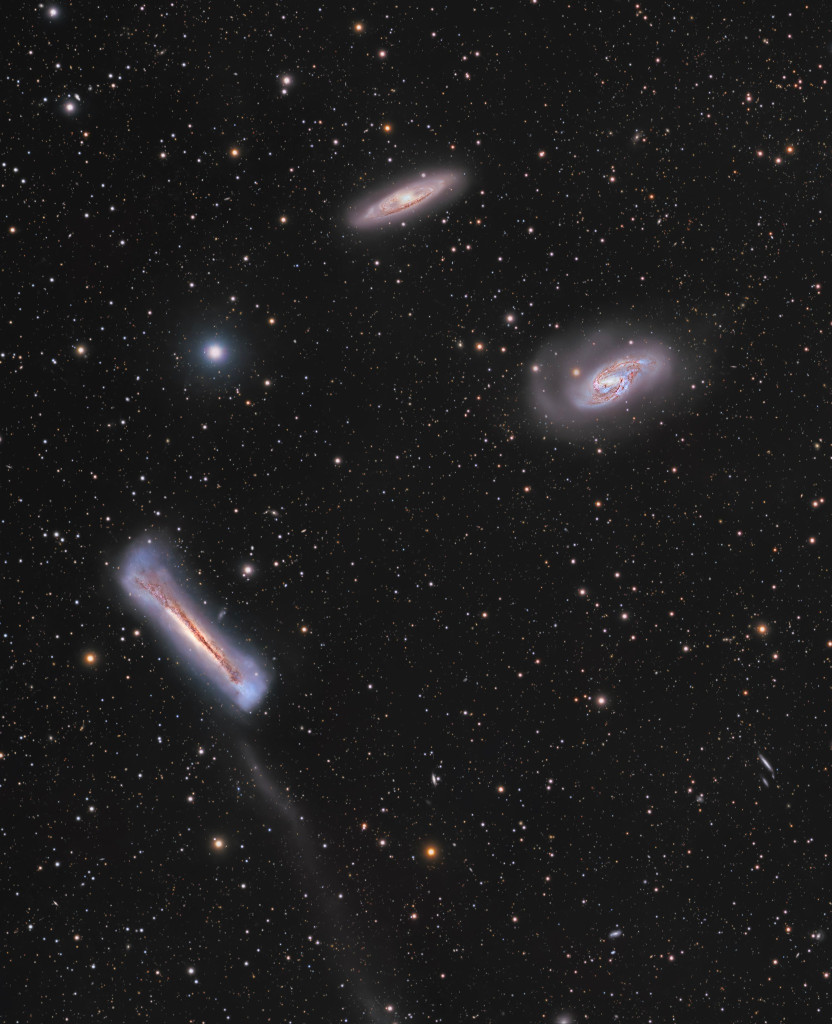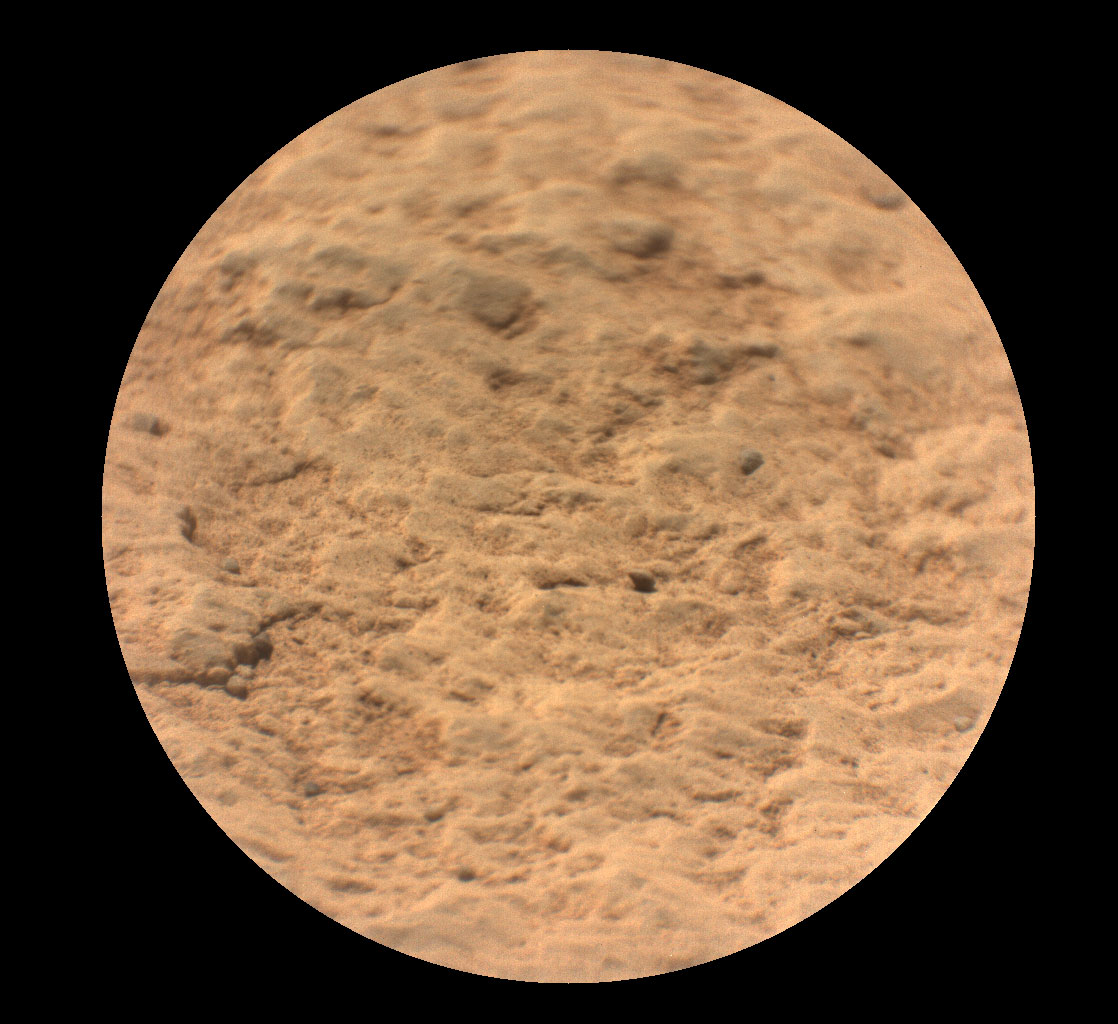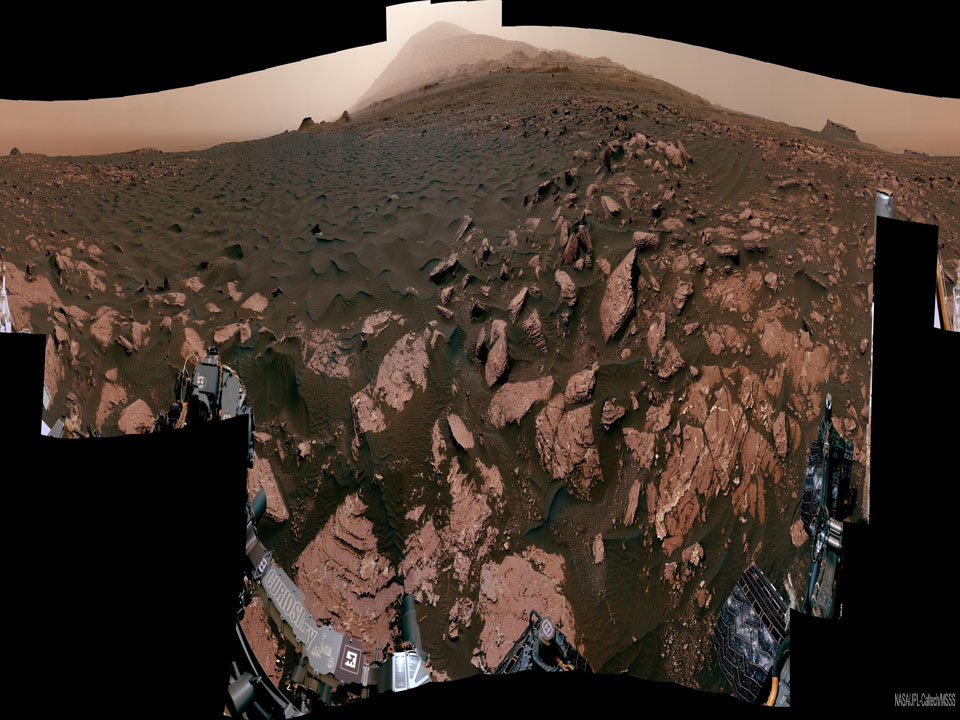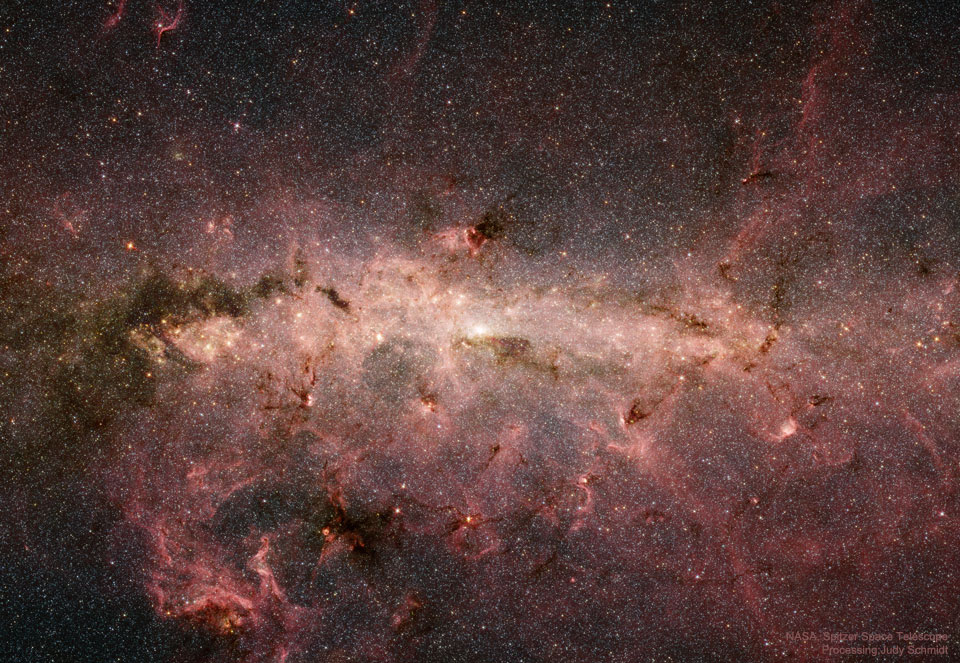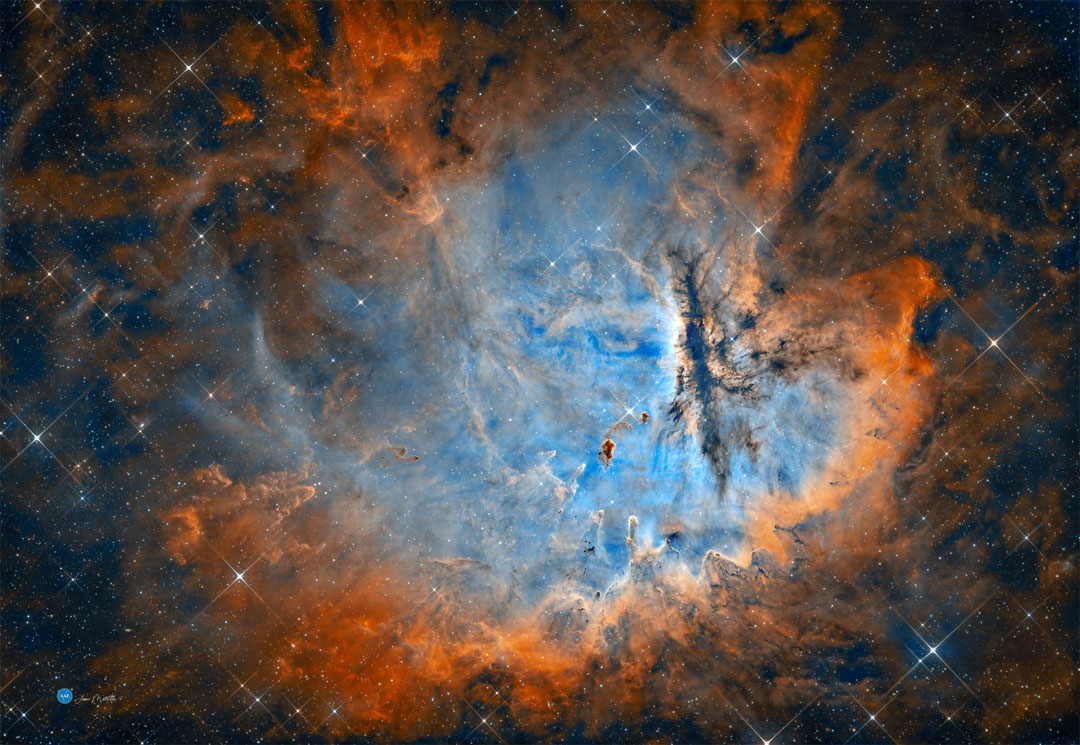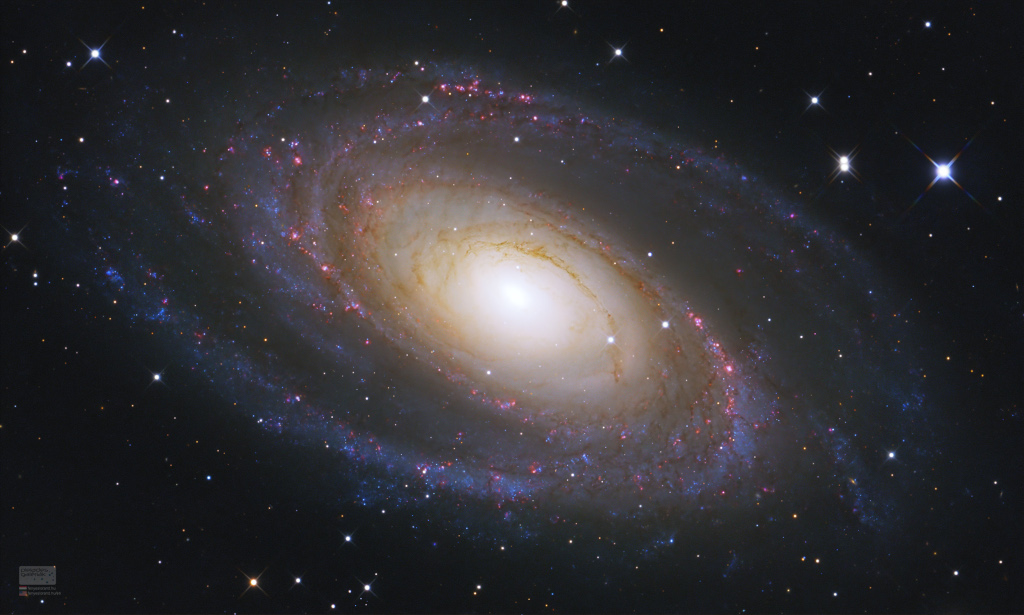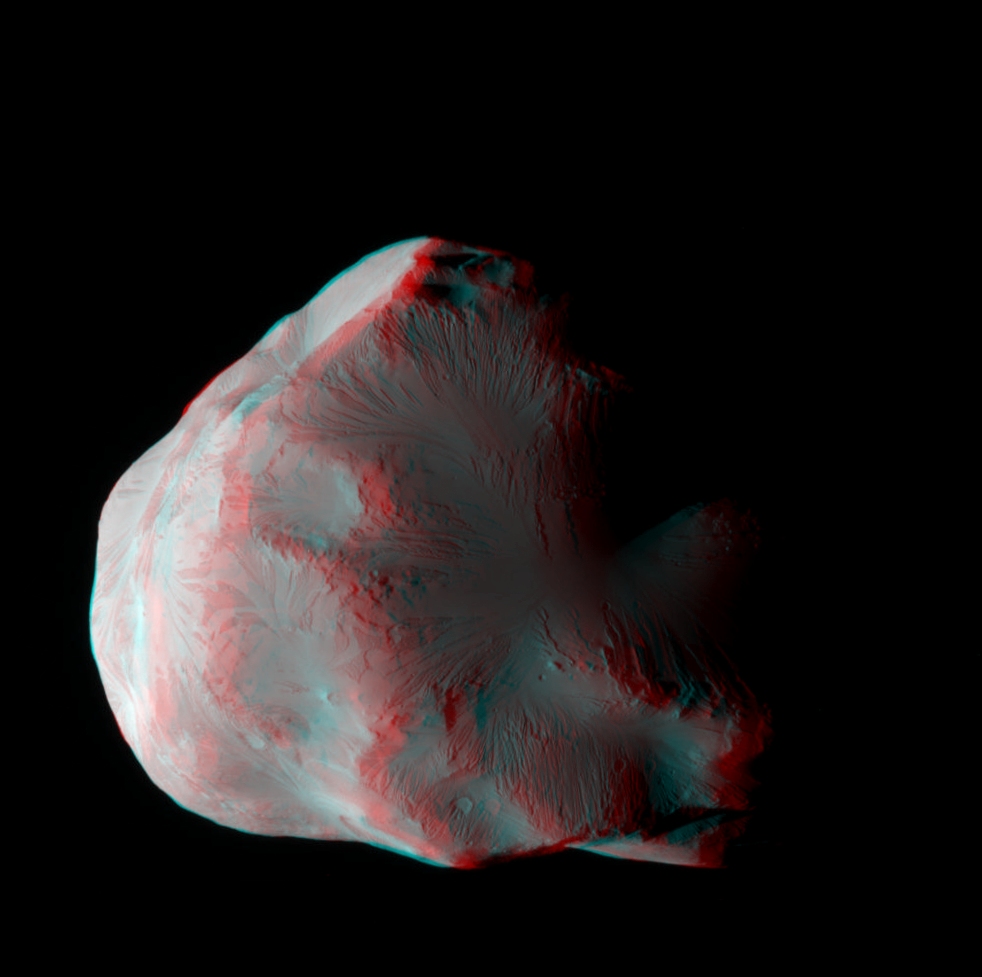| Title: Astronomy Picture of the Day | |
| friendsoffortiesfive > General > General Discussion | Go to subcategory: |
| Author | Content |
|
Niceguy2
|
|
|
Date Posted:03/06/2014 11:29 PMCopy HTML I really love this site and |
|
|
Niceguy2
|
#5876 |
|
Re:Astronomy Picture of the Day Date Posted:03/17/2025 2:11 AMCopy HTML
|
|
|
Niceguy2
|
#5877 |
|
Re:Astronomy Picture of the Day Date Posted:03/18/2025 2:14 AMCopy HTML Image Credit & Copyright: Brian Hopkins (East Coast Astronomer) Explanation: Thor not only has his own day (Thursday), but a helmet in the heavens. Popularly called Thor's Helmet, NGC 2359 is a hat-shaped cosmic cloud with wing-like appendages. Heroically sized even for a Norse god, Thor's Helmet is about 30 light-years across. In fact, the cosmic head-covering is more like an interstellar bubble, blown by a fast wind from the bright, massive star near the bubble's center. Known as a Wolf-Rayet star, the central star is an extremely hot giant thought to be in a brief, pre-supernova stage of evolution. NGC 2359 is located about 15,000 light-years away toward the constellation of the Great Overdog. This sharp image is a mixed cocktail of data from narrowband filters, capturing not only natural looking stars but details of the nebula's filamentary structures. The star in the center of Thor's Helmet is expected to explode in a spectacular supernova sometime within the next few thousand years. |
|
|
Niceguy2
|
#5878 |
|
Re:Astronomy Picture of the Day Date Posted:03/19/2025 1:51 AMCopy HTML Image Credit & Copyright: Timothy Martin Explanation: There is no sea on Earth large enough to contain the Shark nebula. This predator apparition poses us no danger as it is composed only of interstellar gas and dust. Dark dust like that featured here is somewhat like cigarette smoke and created in the cool atmospheres of giant stars. After expelling gas and gravitationally recondensing, massive stars may carve intricate structures into their birth cloud using their high energy light and fast stellar winds as sculpting tools. The heat they generate evaporates the murky molecular cloud as well as causing ambient hydrogen gas to disperse and glow red. During disintegration, we humans can enjoy imagining these great clouds as common icons, like we do for water clouds on Earth. Including smaller dust nebulae such as Van den Bergh 149 & 150, the Shark nebula, sometimes cataloged as LDN 1235, spans about 15 light years and lies about 650 light years away toward the constellation of the King of Aethiopia (Cepheus). |
|
|
Niceguy2
|
#5879 |
|
Re:Astronomy Picture of the Day Date Posted:03/20/2025 1:00 AMCopy HTML Image Credit: Firefly Aerospace Explanation: On March 14 the Full Moon slid through Earth's dark umbral shadow and denizens of planet Earth were treated to a total lunar eclipse. Of course, from the Moon's near side that same astronomical syzygy was seen as a solar eclipse. Operating in the Mare Crisium on the lunar surface, the Blue Ghost lander captured this video frame of Earth in silhouette around 3:30am CDT, just as the Sun was emerging from behind the terrestrial disk. From Blue Ghost's lunar perspective the beautiful diamond ring effect, familiar to earthbound solar eclipse watchers, is striking. Since Earth appears about four times the apparent size of the Sun from the lunar surface the inner solar corona, the atmosphere of the Sun most easily seen from Earth during a total solar eclipse, is hidden from view. Still, scattering in Earth's dense atmosphere creates the glowing band of sunlight embracing our fair planet. |
|
|
Niceguy2
|
#5880 |
|
Re:Astronomy Picture of the Day Date Posted:03/21/2025 3:06 AMCopy HTML Image Credit & Copyright: Hunter Wells Explanation: Recorded from 2024 March 10, to 2025 March 1, this composited series of images reveals a pattern in the seasonal drift of the Sun's daily motion through planet Earth's sky. Known to some as an analemma, the figure-eight curve was captured in exposures taken on the indicated dates only at 18:38 UTC from the exact same location south of Stephenville, Texas. The Sun's position on the 2024 solstice dates of June 20 and December 21 would be at the top and bottom of the curve and correspond to the astronomical beginning of summer and winter in the north. Points that lie along the curve half-way between the solstices would mark the equinoxes. The 2024 equinox on September 22, and in 2025 the equinox on March 20 (today) are the start of northern fall and spring. And since one of the exposures was made on 2024 April 8 from the Stephenville location at 18:38:40 UTC, this analemma project also reveals the solar corona in planet Earth's sky during a total solar eclipse. |
|
|
Niceguy2
|
#5881 |
|
Re:Astronomy Picture of the Day Date Posted:03/22/2025 2:44 AMCopy HTML Image Credit & Copyright: Rabeea Alkuwari Explanation: This popular group leaps into the early evening sky around the March equinox and the northern hemisphere spring. Famous as the Leo Triplet, the three magnificent galaxies found in the prominent constellation Leo gather here in one astronomical field of view. Crowd pleasers when imaged with even modest telescopes, they can be introduced individually as NGC 3628 (bottom left), M66 (middle right), and M65 (top center). All three are large spiral galaxies but tend to look dissimilar, because their galactic disks are tilted at different angles to our line of sight. NGC 3628, also known as the Hamburger Galaxy, is temptingly seen edge-on, with obscuring dust lanes cutting across its puffy galactic plane. The disks of M66 and M65 are both inclined enough to show off their spiral structure. Gravitational interactions between galaxies in the group have left telltale signs, including the tidal tails and warped, inflated disk of NGC 3628 and the drawn out spiral arms of M66. This gorgeous view of the region spans over 1 degree (two full moons) on the sky. Captured with a telescope from Sawda Natheel, Qatar, planet Earth, the frame covers over half a million light-years at the Leo Trio's estimated 30 million light-year distance. |
|
|
Niceguy2
|
#5882 |
|
Re:Astronomy Picture of the Day Date Posted:03/23/2025 1:33 AMCopy HTML Image Credit: NASA/JPL-Caltech/LANL/CNES/CNRS Explanation: What's the sound of one laser zapping? There's no need to consult a Zen master to find out, just listen to the first acoustic recording of laser shots on Mars. On Mars Rover Perseverance mission sol 12 (March 2, 2021) the SuperCam instrument atop the rover's mast zapped a rock dubbed Ma'az 30 times from a range of about 3.1 meters. Its microphone recorded the soft staccato popping sounds of the rapid series of SuperCam laser zaps. Shockwaves created in the thin Martian atmosphere as bits of rock are vaporized by the laser shots make the popping sounds, sounds that offer clues to the physical structure of the target. This SuperCam close-up of the Ma'az target region is 6 centimeters (2.3 inches) across. Ma'az means Mars in the Navajo language. |
|
|
Niceguy2
|
#5883 |
|
Re:Astronomy Picture of the Day Date Posted:03/24/2025 2:13 AMCopy HTML Image Credit: NASA, JPL-Caltech, MSSS, Curiosity Rover Explanation: This was once a beach -- on ancient Mars. The featured 360-degree panorama, horizontally compressed, was taken in 2017 by the robotic Curiosity rover that explored the red planet. Named Ogunquit Beach after its terrestrial counterpart, evidence shows that at times long ago the area was underwater, while at other times it was at the edge of an ancient lake. The light peak in the central background is the top of Mount Sharp, the central feature in Gale Crater where Curiosity explored. Portions of the dark sands in the foreground were scooped up for analysis. The light colored bedrock is composed of sediment that likely settled at the bottom of the now-dried lakebed. The featured panorama (interactive version here) was created from over 100 images and seemingly signed by the rover on the lower left. |
|
|
Niceguy2
|
#5884 |
|
Re:Astronomy Picture of the Day Date Posted:03/25/2025 2:05 AMCopy HTML 2025 March 14 Image Credit: NASA, JPL-Caltech, Spitzer Space Telescope, Susan Stolovy (SSC/Caltech) et al.; Reprocessing: Judy Schmidt Explanation: What does the center of our galaxy look like? In visible light, the Milky Way's center is hidden by clouds of obscuring dust and gas. But in this stunning vista, the Spitzer Space Telescope's infrared cameras, penetrate much of the dust revealing the stars of the crowded galactic center region. A mosaic of many smaller snapshots, the detailed, false-color image shows older, cool stars in bluish hues. Red and brown glowing dust clouds are associated with young, hot stars in stellar nurseries. The very center of the Milky Way has recently been found capable of forming newborn stars. The galactic center lies some 26,700 light-years away, toward the constellation Sagittarius. At that distance, this picture spans about 900 light-years. |
|
|
Niceguy2
|
#5885 |
|
Re:Astronomy Picture of the Day Date Posted:03/26/2025 2:26 AMCopy HTML Image Credit & Copyright: Zixiong Jin Explanation: What causes a blue band to cross the Moon during a lunar eclipse? The blue band is real but usually quite hard to see. The featured HDR image of last week's lunar eclipse, however -- taken from Norman, Oklahoma (USA) -- has been digitally processed to exaggerate the colors. The gray color on the upper right of the top lunar image is the Moon's natural color, directly illuminated by sunlight. The lower parts of the Moon on all three images are not directly lit by the Sun since it is being eclipsed -- it is in the Earth's shadow. It is faintly lit, though, by sunlight that has passed deep through Earth's atmosphere. This part of the Moon is red -- and called a blood Moon -- for the same reason that Earth's sunsets are red: because air scatters away more blue light than red. The unusual purple-blue band visible on the upper right of the top and middle images is different -- its color is augmented by sunlight that has passed high through Earth's atmosphere, where red light is better absorbed by ozone than blue. |
|
|
Niceguy2
|
#5886 |
|
Re:Astronomy Picture of the Day Date Posted:03/27/2025 1:49 AMCopy HTML Image Credit & Copyright: Juan Montilla (AAE) Explanation: You'd think the Pacman Nebula would be eating stars, but actually it is forming them. Within the nebula, a cluster's young, massive stars are powering the pervasive nebular glow. The eye-catching shapes looming in the featured portrait of NGC 281 are sculpted dusty columns and dense Bok globules seen in silhouette, eroded by intense, energetic winds and radiation from the hot cluster stars. If they survive long enough, the dusty structures could also be sites of future star formation. Playfully called the Pacman Nebula because of its overall shape, NGC 281 is about 10,000 light-years away in the constellation Cassiopeia. This sharp composite image was made through narrow-band filters in Spain in mid 2024. It combines emissions from the nebula's hydrogen and oxygen atoms to synthesize red, green, and blue colors. The scene spans well over 80 light-years at the estimated distance of NGC 281. |
|
|
Niceguy2
|
#5887 |
|
Re:Astronomy Picture of the Day Date Posted:03/28/2025 1:53 AMCopy HTML Image Credit & Copyright: Lorand Fenyes Explanation: One of the brightest galaxies in planet Earth's sky is similar in size to our Milky Way Galaxy: big, beautiful Messier 81. Also known as NGC 3031 or Bode's galaxy for its 18th century discoverer, this grand spiral can be found toward the northern constellation of Ursa Major, the Great Bear. The sharp, detailed telescopic view reveals M81's bright yellow nucleus, blue spiral arms, pinkish starforming regions, and sweeping cosmic dust lanes. But some dust lanes actually cut across the galactic disk (left of center), contrary to other prominent spiral features. The errant dust lanes may be the lingering result of a close encounter between M81 and the nearby galaxy M82 lurking outside of this frame. Scrutiny of variable stars in M81 has yielded a well-determined distance for an external galaxy -- 11.8 million light-years. |
|
|
Niceguy2
|
#5888 |
|
Re:Astronomy Picture of the Day Date Posted:03/29/2025 2:08 AMCopy HTML Image Credit: Apollo 17, NASA Explanation: Why is the Moon so dusty? On Earth, rocks are weathered by wind and water, creating soil and sand. On the Moon, eons of constant micrometeorite bombardment have blasted away at the rocky surface creating a layer of powdery lunar soil or regolith. For the Apollo astronauts and their equipment, the pervasive, fine, gritty dust was definitely a problem. On the lunar surface in December 1972, Apollo 17 astronauts Harrison Schmitt and Eugene Cernan needed to repair one of their rover's fenders in an effort to keep the rooster tails of dust away from themselves and their gear. This picture reveals the wheel and fender of their dust covered rover along with the ingenious application of spare maps, clamps, and a grey strip of "duct tape". |
|
|
Niceguy2
|
#5889 |
|
Re:Astronomy Picture of the Day Date Posted:03/30/2025 1:19 AMCopy HTML Image Credit: Cassini Imaging Team, ISS, JPL, ESA, NASA; Stereo Image by Roberto Beltramini Explanation: Get out your red/blue glasses and float next to Helene, small, icy moon of Saturn. Appropriately named, Helene is a Trojan moon, so called because it orbits at a Lagrange point. A Lagrange point is a gravitationally stable position near two massive bodies, in this case Saturn and larger moon Dione. In fact, irregularly shaped ( about 36 by 32 by 30 kilometers) Helene orbits at Dione's leading Lagrange point while brotherly ice moon Polydeuces follows at Dione's trailing Lagrange point. The sharp stereo anaglyph was constructed from two Cassini images captured during a close flyby in 2011. It shows part of the Saturn-facing hemisphere of Helene mottled with craters and gully-like features. |
|
|
Niceguy2
|
#5890 |
|
Re:Astronomy Picture of the Day Date Posted:03/31/2025 1:16 AMCopy HTML Image Credit & Copyright: Wioleta Gorecka Explanation: What if the Sun and Moon rose together? That happened yesterday over some northern parts of planet Earth as a partial solar eclipse occurred shortly after sunrise. Regions that experienced the Moon blocking part of the Sun included northeastern parts of North America and northwestern parts of Europe, Asia, and Africa. The featured image was captured yesterday over the Grábrók volcanic crater in Iceland where much of the Sun became momentarily hidden behind the Moon. The image was taken through a cloudy sky but so well planned that the photographer's friend appeared to be pulling the Sun out from behind the Moon. No part of the Earth experienced a total solar eclipse this time. In the distant past, some of humanity was so surprised when an eclipse occurred that ongoing battles suddenly stopped. Today, eclipses are not a surprise and are predicted with an accuracy of seconds. |
|
|
Niceguy2
|
#5891 |
|
Re:Astronomy Picture of the Day Date Posted:04/01/2025 1:10 AMCopy HTML 2025 March 31 Video Credit: NASA, JHUAPL, Naval Research Lab, Parker Solar Probe; h/t: Richard Petarius III; Music: Russian Easter Festival Overture, Op. 36 by N. Rimsky-Korsakov; Source: Musopen; Performance: Czech National Symphony Orchestra (via Musopen); Music Credit: Wikimedia Commons Explanation: If you watch long enough, a comet will appear. Before then, you will see our Solar System from inside the orbit of Mercury as recorded by NASA's Parker Solar Probe looping around the Sun. The video captures coronal streamers into the solar wind, a small Coronal Mass Ejection, and planets including, in order of appearance, Mercury, Venus, Saturn, Earth, Mars, and Jupiter. Between the emergence of Earth and Mars, Comet Tsuchinshan-ATLAS appears with a distinctive tail. The continuous fleeting streaks are high energy particles from the Sun impacting Parker's sideways looking camera. The featured time-lapse video was taken last year during Encounter 21, Parker's 21st close approach to the Sun. Studying data and images from Parker are delivering a better understanding of the dynamic Sun's effects on Earth's space weather as well as humanity's power grids, spacecraft, and space-faring astronauts. |
|
|
Niceguy2
|
#5892 |
|
Re:Astronomy Picture of the Day Date Posted:04/02/2025 2:34 AMCopy HTML 2025 April 1 Video Credit & Copyright: Jason Kurth; Music: House of the Rising Sun (Sebastian McQueen via SoundCloud) Explanation: Can the Sun appear to rise twice at the same time? This was just the case a few days ago from Les Escoumins, Quebec, Canada as our Solar System's bright central orb rose just as it was being partially eclipsed by the Moon. The featured video shows this unusual double-sunrise in real time and being reflected by the St. Lawrence River. Soon after the initial two spots of light appear over distant clouds, what appears to be bright horns become visible -- which are really just parts of the Sun not being eclipsed. Soon, the entire eclipsed Sun is visible above the horizon. In all, this broken sunrise took less than two minutes during a partial eclipse that lasted many times longer. Although the Moon circles the Earth once a month (moon-th), it does not always eclipse the Sun because its tilted orbit usually takes it above or below. Ha, ha, the name of the song is "House of the Rising Sun". |







